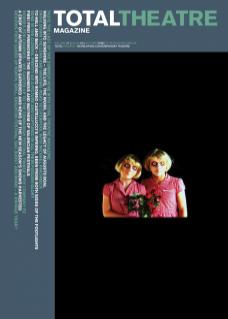With a sort of theatrical androgyny, German company Motus’s: Cruel Tales of Youth escapes classification, creating inextricably connected physical, theatrical, phenomenological and digital languages, building meaning and style in multi-dimensional layers: a ‘show-experiment’ as director Enrico Casagrande calls it. The elaborate form mirrors its thematic concentration on complexes of identity, expression and youth within urban industrial landscapes – the frustrations and dangers of young people trying to find their place in a world of empty spaces created by adults. This experiment reflects what Casagrande calls, ‘the openness to risk and the fragility of showing yourself’ encapsulated by the performers themselves – all young people, untrained but found during filming in European cities and brought into the show to bring their world alive on stage.
The theatrical languages of the show – edgy performances, live music, dark animations, street dance and intense soundscapes – amplify its ideas, showcasing the raw, creative and dangerous talent of both the performers and the young people whom the show aims to represent. There are scenes of breathtaking visual sophistication – a game of car dodging where only the sounds of screeching tyres indicate close shaves, and a suicide simply staged but dramatised digitally onscreen as an endless fall into oblivion from the rooftops. Reality slips across film, animation and live performance; we are lost in this world like its skater protagonist handing out ‘Missing’ flyers with her own face on them. The autobiographical performances are exhilarating yet gentle and endearing, grounded in truth and humanity. Cruel Tales of Youth is theatrical poetry, condensed, intense and lyrical storytelling through multidimensional discourse – it left me breathless. An astonishing success for Motus and QUN.

